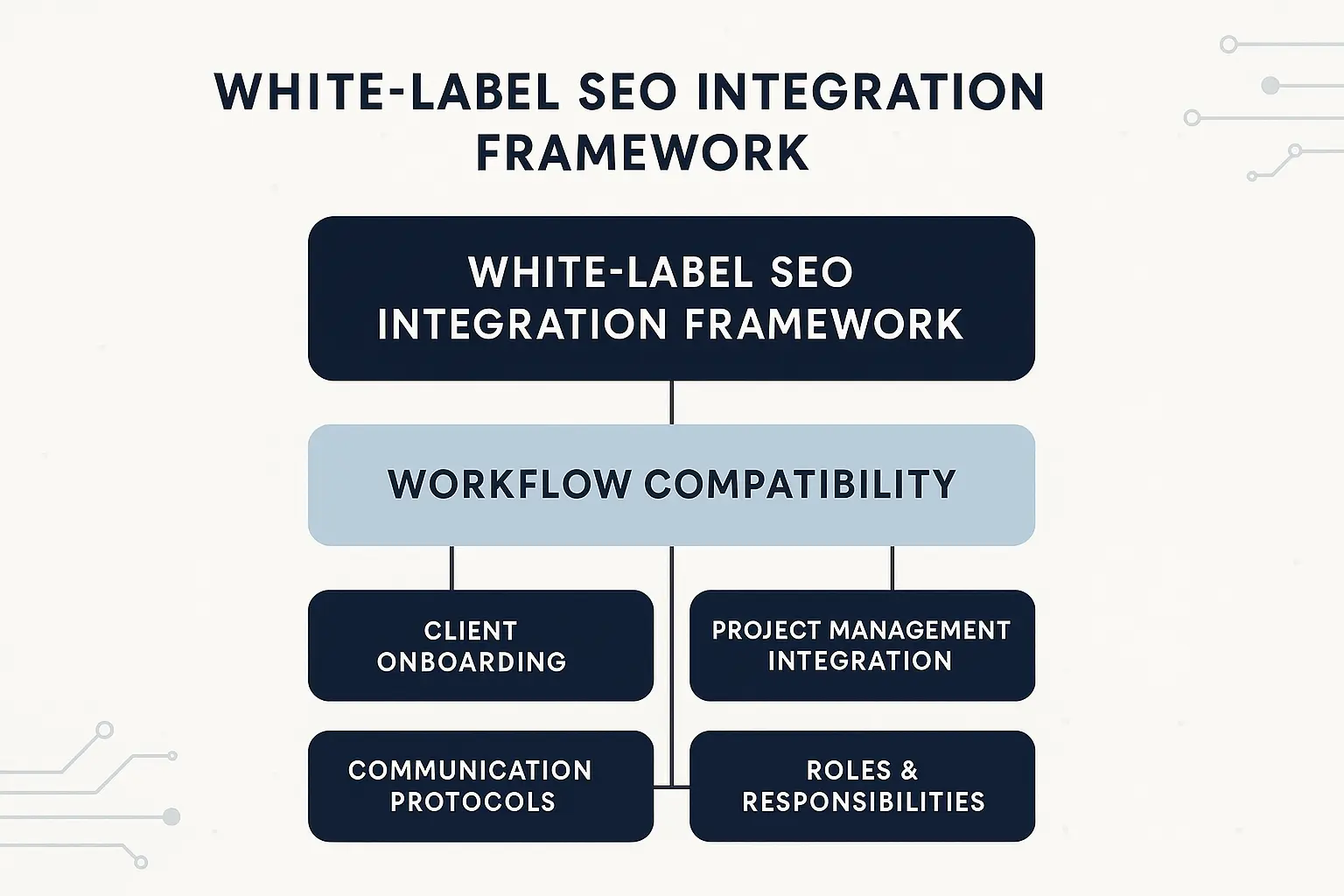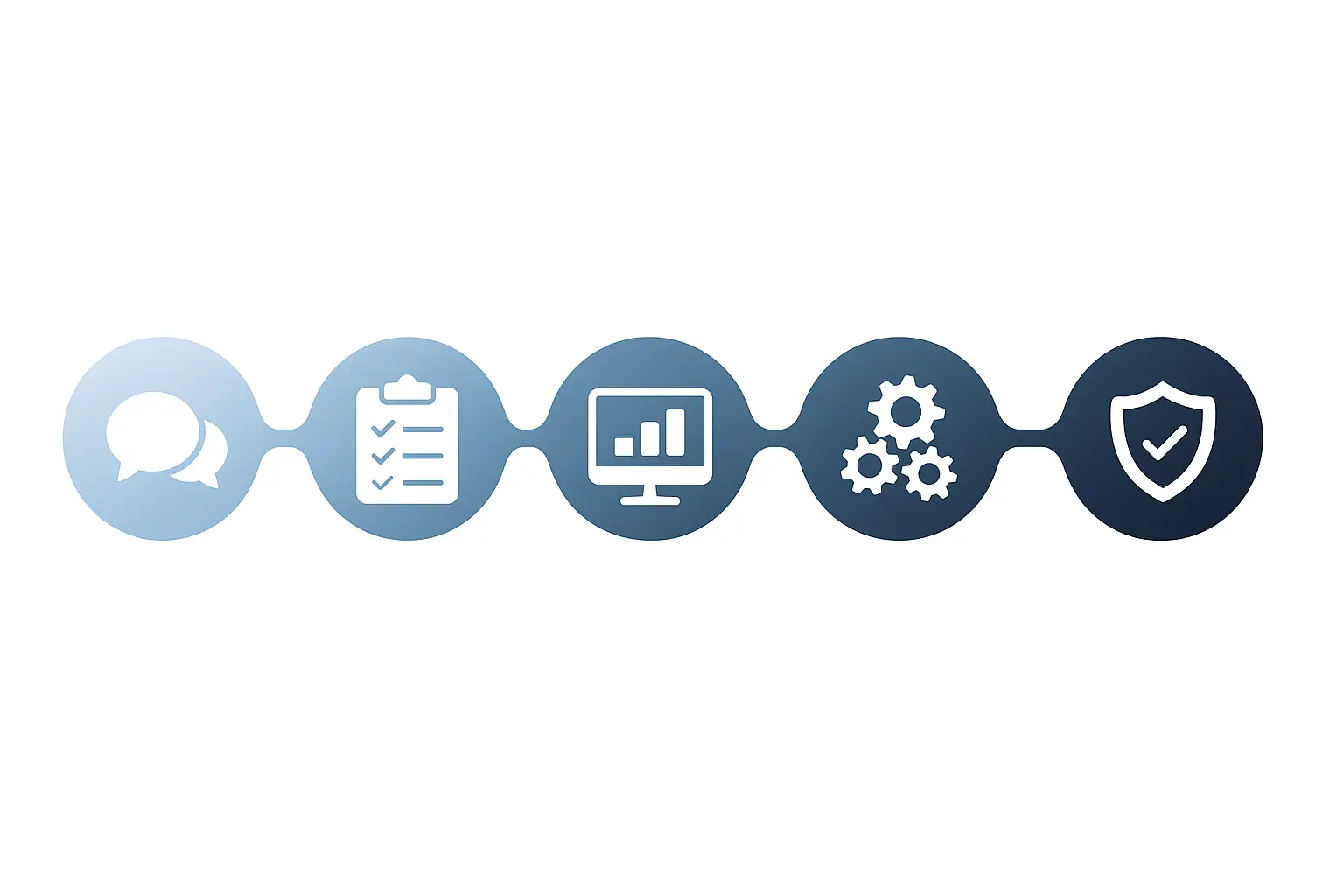You’ve decided to scale. You see the demand for SEO—a market projected to hit an astounding $122.11 billion by 2028—and you know it’s the key to unlocking new revenue streams and delivering more value to your clients. A white-label partnership is the logical next step.
But the real question isn’t who to partner with. It’s how you’ll manage the partnership without creating operational chaos.
How do you integrate a third-party team so seamlessly they feel like an extension of your own, completely invisible to your client? And how do you sidestep the common pitfalls of miscommunication, workflow bottlenecks, and loss of quality control that keep so many agency owners up at night?
Most guides focus on choosing a provider. This one is different. It’s your operational playbook for building a scalable, efficient, and invisible SEO delivery system.
The Foundation: The White-Label SEO Integration Framework
Success in white-label SEO isn’t about finding a vendor; it’s about building a system. A vendor just executes tasks, while an integrated partner becomes the operational backbone that powers your growth.
The right framework transforms the relationship from a simple hand-off to a deeply embedded, high-performance engine within your agency. This framework is built on three core pillars: proactive vetting, seamless onboarding, and flawless execution. Getting this right is the difference between struggling to manage a supplier and effortlessly scaling your services.
Let’s break it down, phase by phase.
Phase 1: Pre-Partnership – Setting the Stage for Success
Before you sign any contract, the most critical work begins. The biggest challenges agencies face when outsourcing are maintaining quality control and integrating workflows. This means your vetting process must go deeper than pricing and case studies. You’re not just buying SEO services; you’re evaluating a potential operational partner.
Ask pointed questions that reveal their integration capabilities:
- Project Management: “How do you integrate with agency PM tools like Asana or ClickUp? Do you require us to use your proprietary platform, or can you work within our system?” A partner who forces you into their ecosystem creates friction. A true partner adapts to yours.
- Communication: “What is your standard communication protocol? Who will be our single point of contact, and what are the expected response times?” Vague answers are a red flag. You need a clear, structured communication channel.
- Flexibility & Invisibility: “How are deliverables and reports formatted? Are they 100% unbranded and ready for our logo, or will we need to spend hours reformatting them?” The goal is to ensure the partner remains completely invisible.
Your evaluation should focus on finding a partner whose processes are designed to be absorbed into your own.

Pro-Tip: Before onboarding any partner, set up your internal “single source of truth.” Create a dedicated project or board in your existing PM tool (Asana, ClickUp, Trello) for each client. This ensures you retain control and have a centralized place to manage tasks, approvals, and files, regardless of who handles the execution.
Phase 2: Onboarding – Creating a Seamless Client & Partner Experience
The client onboarding process is your first and most important test of the “invisibility” principle. Your client should have a smooth, branded experience, while your partner gets everything they need to start working immediately.
A white-label client onboarding checklist is non-negotiable. It should be a branded document you send to your client gathering all necessary assets for the SEO campaign, such as:
- Website & GMB access
- Analytics and Search Console credentials
- Primary target services and locations
- Key competitor information
- Brand guidelines and tone of voice
Once collected, you can securely pass this information to your partner. The client only ever interacts with you, reinforcing your agency as the sole provider and strategic lead.
Next, integrate your PM tools. This is where theory becomes reality.
- Grant Guest Access: Invite your partner’s point of contact as a guest to the specific client project in your PM tool. This walls them off from other clients and internal agency chatter.
- Use Custom Fields: Create custom fields for “Status” (e.g., Awaiting Approval, In Progress, Complete), “Due Date,” and “Deliverable Type” (e.g., Content Brief, Technical Audit, Report). This makes tracking progress at a glance effortless.
- Establish Task Templates: Create templates for recurring requests like “Monthly Performance Report” or “New Content Piece” to standardize the process and ensure no detail is missed.
This structured approach eliminates messy email chains and centralizes all communication and approvals within the workflow you already use.

Phase 3: Execution – Flawless Day-to-Day Management
With a solid foundation, day-to-day management becomes a smooth, predictable process focused on review and approval, not micromanagement.
Your role as the agency shifts to that of a strategic director. You are the sole point of contact for the client, translating their goals into actionable tasks for your partner. Meanwhile, your partner acts as your execution engine, focused on delivering high-quality work on schedule.
A critical element here is the art of rebranding reports. A top-tier partner will provide you with data-rich, unbranded reports. Your job is to:
- Add Your Brand: Apply your logo, colors, and formatting.
- Insert Your Narrative: The data tells what happened. You tell the client why it matters. Add an executive summary with your strategic insights and next steps. This reinforces your value beyond simple execution.
- Present with Confidence: Deliver the report as if it were produced entirely by your in-house team, because, operationally, it was. Your system and strategy guided the entire process.
This is where partners who leverage AI-powered SEO automation become invaluable. Automated audits and reporting under your branding can significantly cut down on manual reformatting, freeing you to focus entirely on client strategy.

Why This Framework Matters: The JVGLABS Difference
Having a framework is one thing. Having a partner built to operate within it is another.
Competitors may offer a service or lock you into a proprietary platform. We do neither. JVGLABS was designed from the ground up to be the invisible operational engine for agencies. Our entire model is built on the principles of seamless integration.
- We Adapt to You: We work within your Asana, ClickUp, or Trello. We don’t force you into our system; we become a part of yours.
- Automation with Expertise: We use AI to automate up to 90% of traditional SEO tasks—from audits to reporting—which means faster delivery and fewer menial tasks for you to manage. Our human experts then focus on what matters: strategy and performance.
- White-Label First, Always: Every deliverable, from the initial audit to the monthly report, is designed to be 100% yours. We exist to make you look good, and we never forget it.
We don’t just sell white-label SEO execution; we provide the operational backbone that makes scaling profitable and painless.

Frequently Asked Questions
How do I maintain quality control with an outside partner?
Quality control is built into the framework. By establishing clear task templates, defining deliverables, and setting KPIs from the start, you create a system of accountability. The right partner will also have their own internal QA. At JVGLABS, our model of AI-driven execution combined with expert human oversight ensures consistency and quality at scale.
Will my client ever find out I’m using a partner?
Not if you choose a true white-label-first partner. The entire process outlined above—from the branded onboarding checklist to the rebranded reports and your role as the sole point of contact—is designed to ensure complete invisibility. We operate as your silent, in-house team.
How much of my time will be spent managing the relationship?
This framework is designed to minimize your management overhead. With clear communication channels in your PM tool and a partner that leverages automation, your time is spent on high-value strategic tasks like reviewing deliverables and communicating insights to clients, not on managing people or processes.
What if my agency’s PM tool is different from my partner’s?
A flexible partner adapts. What matters is that a shared system exists. Whether it’s Asana, ClickUp, Trello, or another tool, a partner committed to seamless integration will have a process for working within your preferred environment.
Your Next Step: From Framework to Flawless Execution
Scaling your agency’s SEO services doesn’t have to be an operational nightmare. By moving beyond simply choosing a vendor and instead implementing a robust integration framework, you can add a powerful, profitable, and completely invisible SEO engine to your business.
You have the playbook. The next step is putting it into action.
If you’re ready to build a system that lets you scale SEO with confidence, schedule a Partnership Strategy Call with us today. We’ll walk you through how JVGLABS can become the operational backbone for your agency’s growth.

